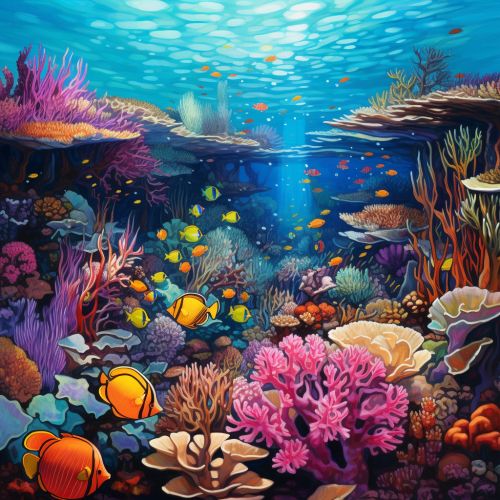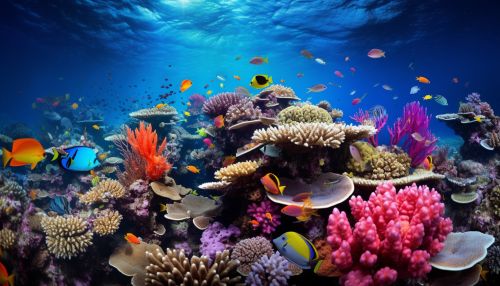Genomic Insights into Coral Symbiosis and Bleaching
Introduction
Coral reefs, the underwater ecosystems built by corals, are among the most biodiverse and productive habitats on Earth. The foundation of these ecosystems is a unique symbiotic relationship between the coral host and its resident photosynthetic algae, commonly known as zooxanthellae. This symbiosis is crucial for the survival and growth of coral reefs, providing them with the necessary nutrients and energy. However, under stress conditions, this symbiosis can break down, leading to a phenomenon known as coral bleaching. The study of coral symbiosis and bleaching at the genomic level provides insights into the mechanisms underlying these processes and their impacts on coral reef ecosystems.


Coral-Symbiodinium Symbiosis
The symbiosis between corals and Symbiodinium is a mutualistic relationship, where both organisms benefit. The coral provides the algae with a protected environment and compounds necessary for photosynthesis. In return, the algae produce oxygen and help the coral to remove wastes. More importantly, they supply the coral with organic products of photosynthesis, which are a significant source of the energy needed by the coral for survival, growth, and reproduction.
The establishment and maintenance of this symbiosis are complex processes regulated at the genomic level. The genomes of both corals and Symbiodinium have evolved specific features that facilitate this symbiosis. For instance, corals possess genes that encode for proteins involved in the recognition, uptake, and maintenance of Symbiodinium. Similarly, Symbiodinium has genes that allow it to adapt to the intracellular environment of the coral and contribute to the coral's nutrition.
Coral Bleaching
Coral bleaching is a stress response that involves the loss of Symbiodinium from the coral tissues, leading to the whitening of the coral. This process is primarily triggered by elevated sea surface temperatures associated with global warming, but other stressors such as pollution and disease can also induce bleaching.
Bleaching can have severe consequences for corals, including reduced growth and reproduction, increased susceptibility to disease, and in severe cases, death. It also impacts the broader coral reef ecosystem, affecting biodiversity and the many species that depend on coral reefs for food and habitat.
Genomic studies have shed light on the mechanisms of coral bleaching. For instance, they have revealed that bleaching involves changes in the expression of a large number of coral and Symbiodinium genes. These include genes involved in stress response, immune response, cell death, and metabolism. Moreover, the genomes of different coral and Symbiodinium species contain variations that may influence their susceptibility to bleaching.
Genomic Insights into Coral Symbiosis and Bleaching
Genomic research has significantly advanced our understanding of coral symbiosis and bleaching. It has allowed scientists to identify the genes and genomic features that underpin these processes and to explore their evolutionary origins and functional roles.
One of the key genomic insights into coral symbiosis is the discovery of the complex gene regulatory networks that control the establishment and maintenance of the symbiosis. These networks involve numerous genes and signaling pathways in both the coral and Symbiodinium, many of which have been identified through genomic studies.
In terms of coral bleaching, genomic research has revealed that this process involves a massive reorganization of the coral's gene expression profile. This includes the upregulation of stress response genes and the downregulation of genes involved in symbiosis maintenance. Moreover, genomic studies have identified genetic markers associated with bleaching susceptibility, which could be used to predict and monitor bleaching events.
Future Directions and Implications
The genomic insights into coral symbiosis and bleaching have important implications for coral reef conservation. They can inform strategies to protect and restore coral reefs in the face of global warming and other threats. For instance, they can guide the selection of coral and Symbiodinium strains for reef restoration projects based on their genomic characteristics.
Moreover, the genomic data can be used to develop predictive models of coral bleaching and to monitor the health of coral reefs. They can also provide a basis for further research into the mechanisms of coral symbiosis and bleaching, including studies using genetic manipulation and other advanced techniques.
Despite the significant progress made, much remains to be learned about the genomic basis of coral symbiosis and bleaching. Future research in this field will likely involve the use of more sophisticated genomic technologies, as well as integrative approaches that combine genomics with other disciplines such as ecology, physiology, and bioinformatics.
